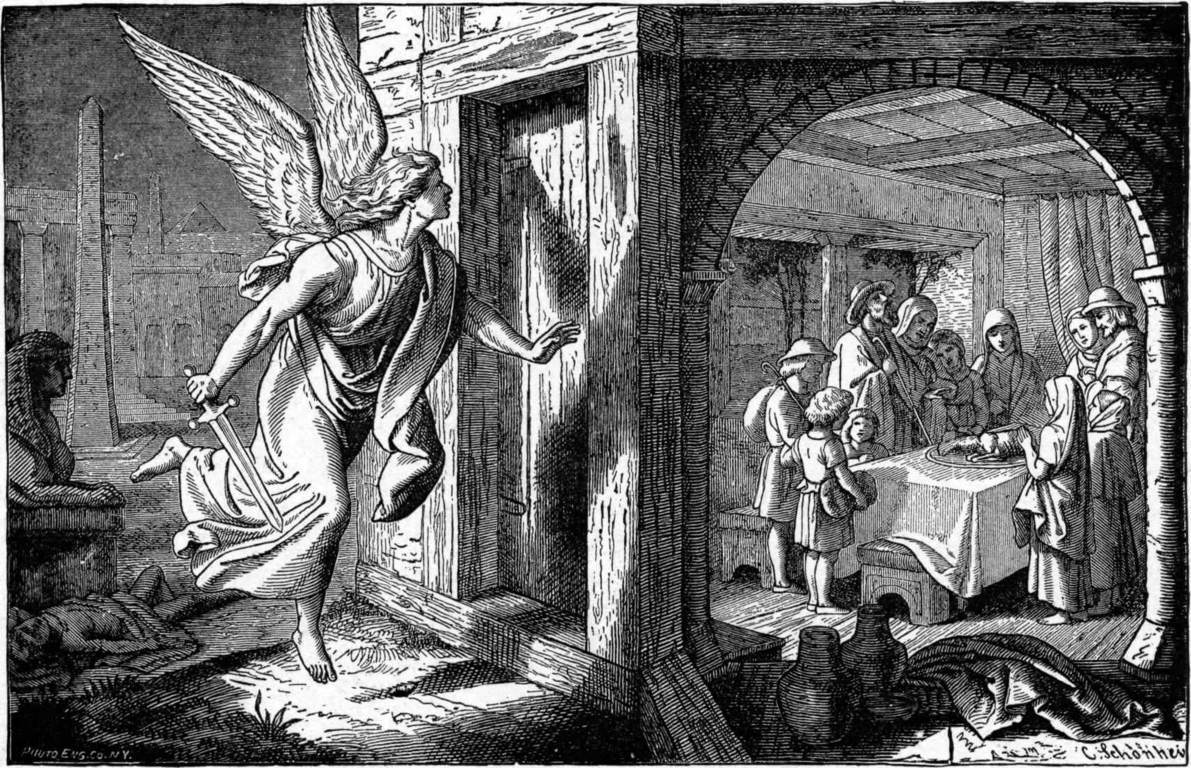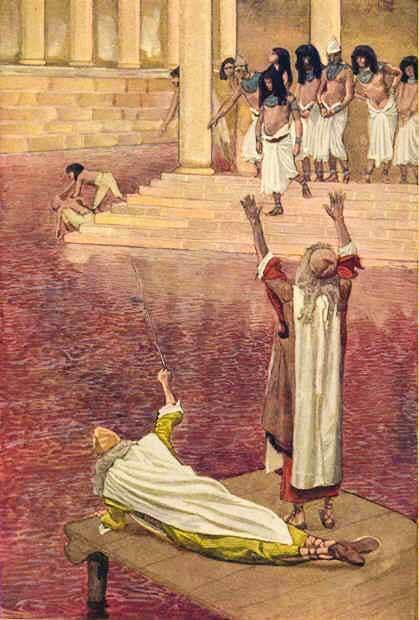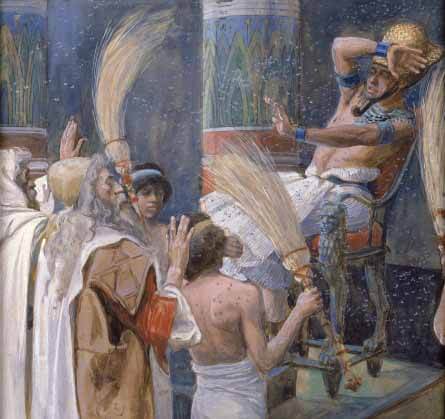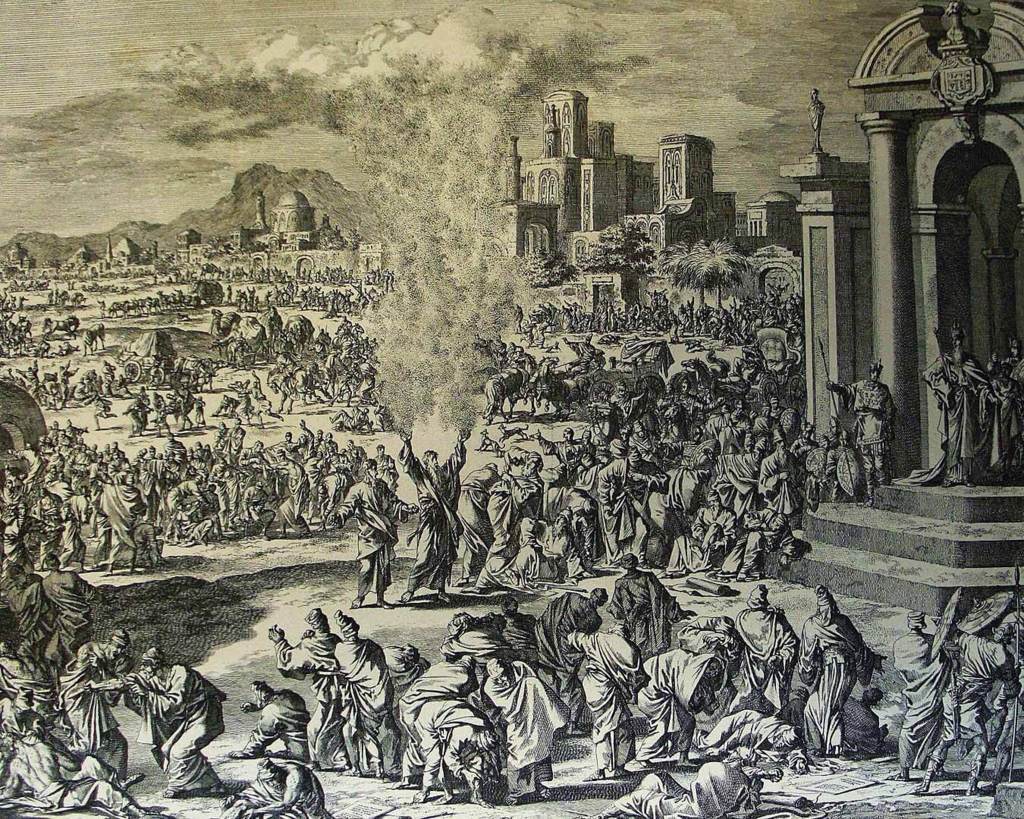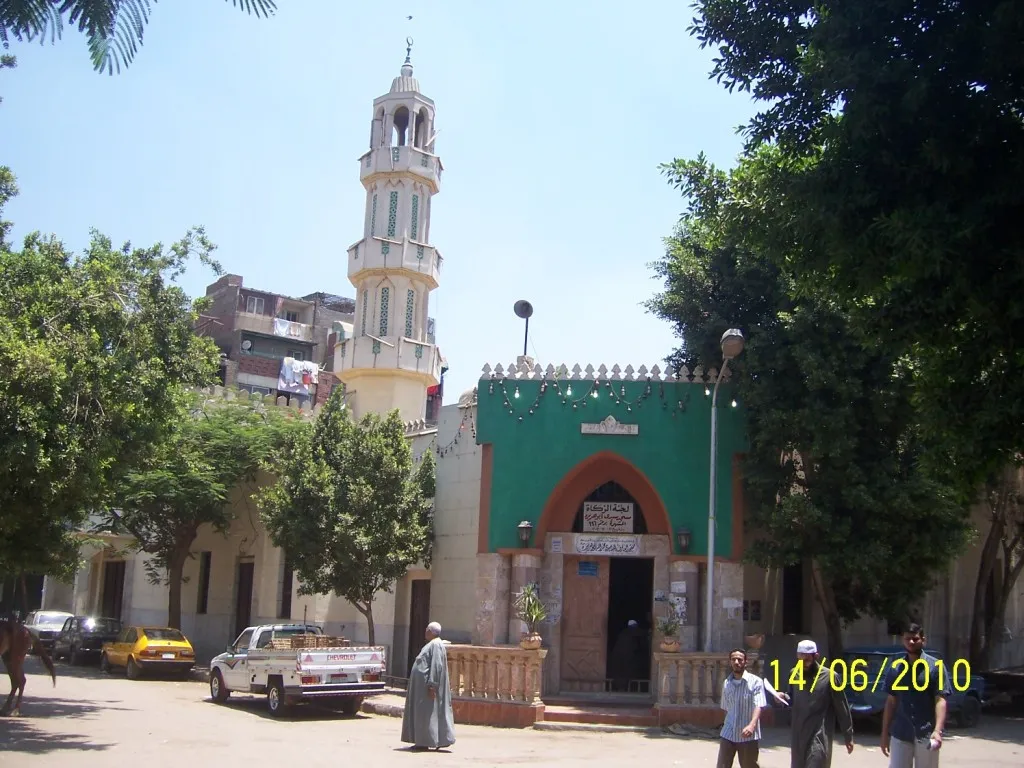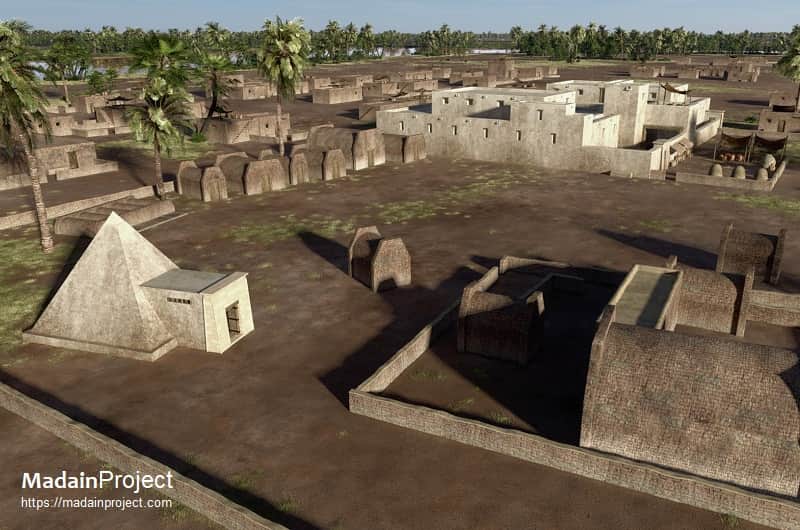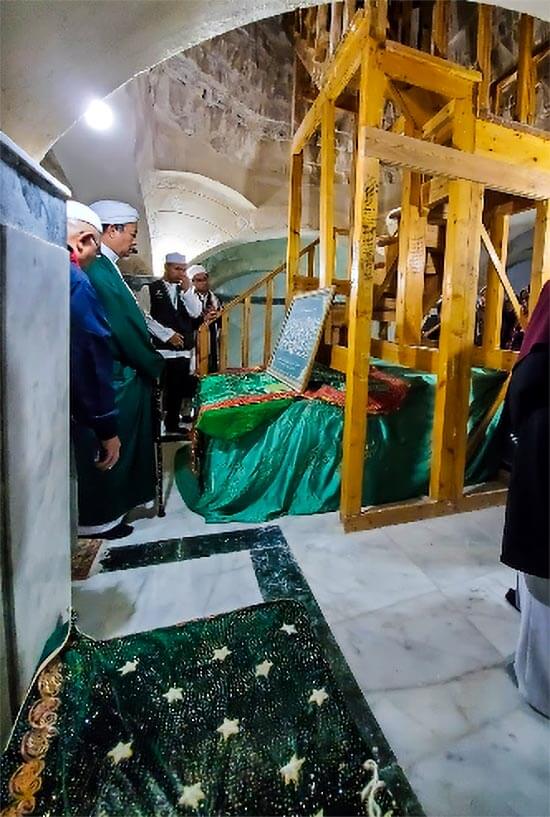Tanis, Egypt
Coordinates: 30.976944, 31.880000
Quran States:
“Indeed We afflicted the Pharaoh and his people with years of drought and scarcity of fruit, so they might take heed. But, whenever good came to them they would say: ‘This is our due.’
And if they suffered from evil, they would consider it an omen ascribed to Hz. Musa عليه اسلام and whoever was with him. Verily, their omens are Allah given, yet most of them would not know.” (Quran 7:130-131)
The first two plagues sent by Allah were long term, lasting years. In fact, they may have been intermittent. Drought would afflict the farmers for years, creating famine in the land because crops would scarcely grow.
Then rains would come, producing the crops, but when harvest arrived, scarcely any fruit or grain would be left to gather.
One of the reasons a crop does not produce fruit is the blighting of their florescence in spring, which can be brought about by many reasons, such fungal parasites, insects or hail.
Whenever a fertile season occurred, the Egyptians would assume it was due to their adherence to their traditional ways, but when they felt the pinch of deprivation, they would blame it on the magical machinations of their adversaries. This continued through the five plagues that followed the two mentioned above.
Both the Pharaoh and his advisors were determined to stay on their path of error:
“And they said: ‘Whatever sign you bring to enchant us (by sorcery), we will not believe in you.’
‘So We sent on them the flood, locusts, weevils, frogs, and blood as (a succession of) obvious signs. Yet they remained arrogant, being criminally sinful people.’” (Quran 7:132-133)
These plagues are mentioned in a different order than in the Bible, which reverses the order of the last three plagues and puts them first.
The first of these signs was the flood, which was torrential rainfall that ruined all growing crops and fruit, penetrated their barns, and blighted their stores of food.
The second was the locusts, which ate even the ‘nails’ that held wooden joists together.
The third was qummal (lice, termites or weevils). In fact, all three types of vermin included in the translation of qummal cause damage.
The first can infest both humans and animals, spreading disease, the second destroys wooden structures and the third consumes or destroys stored grain, and this is the interpretation favored by Ibn Abbas.
The fourth sign was a plague of frogs, which infested every human habitation; a person would fear to open his mouth lest a frog jump into it.
Every time they were afflicted, the people of the Pharaoh would beg:
“…‘O Moses! Invoke your Lord for us because of his promise to you. If you remove the punishment from us, we shall indeed believe in you, and let the Children of Israel go with you.’ But when (Allah) removed the punishment from them for a fixed term, which they had to reach, behold! They broke their word.” (Quran 7:133-134)
The last of the signs was blood in every source of potable water, and this proved to be too much for the advisors of the Pharaoh, who then suggested having Hz. Musa عليه اسلام killed.
Plagues mentioned in Bible
- Turning Every Portable Water to Blood:
- Frogs
- Lice or gnats
- Wild animals or flies
- Pestilence of livestock
- Boils
- Thunderstorm of hail and fire
- Locusts
- Darkness for three days
- Death of firstborn


